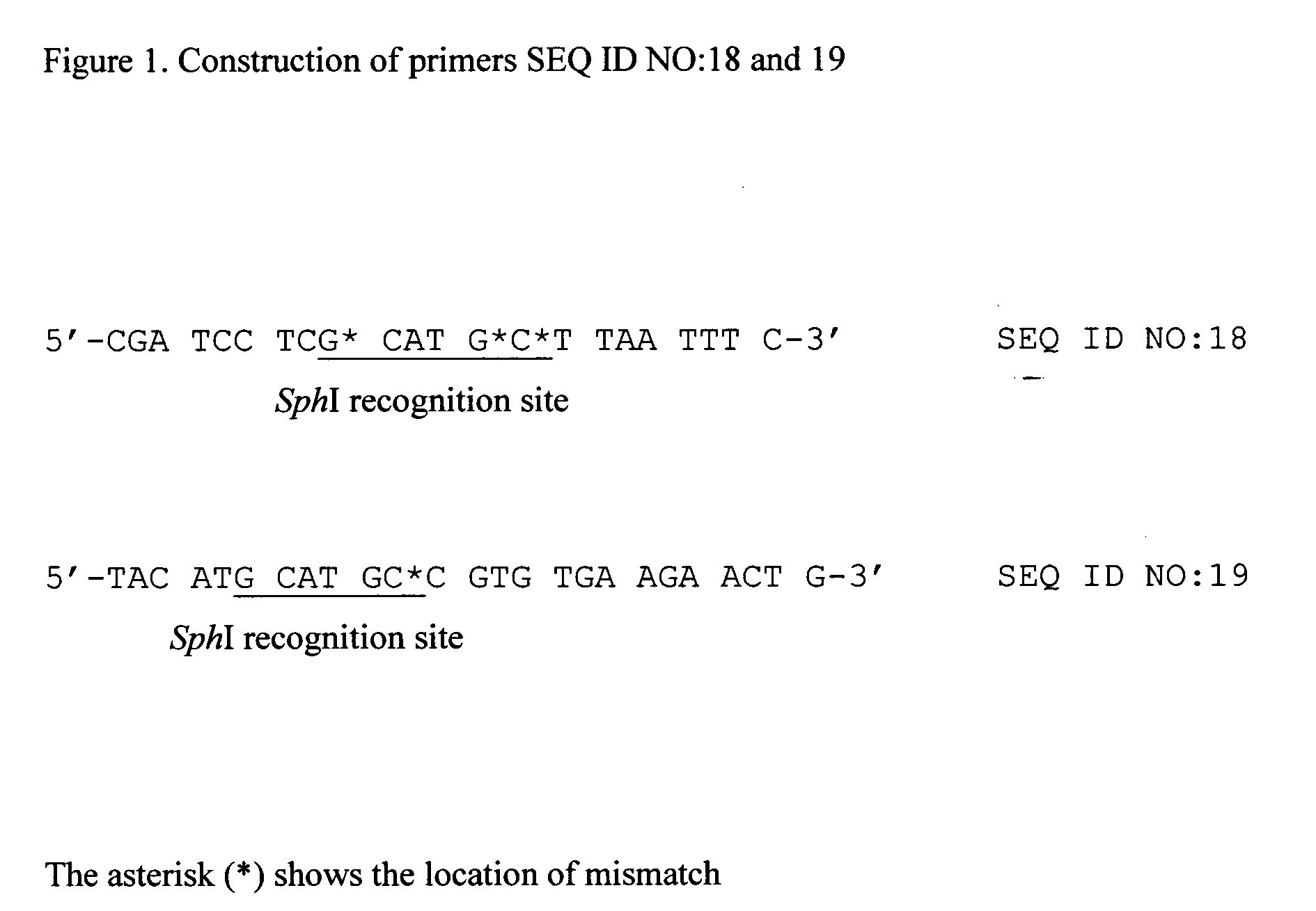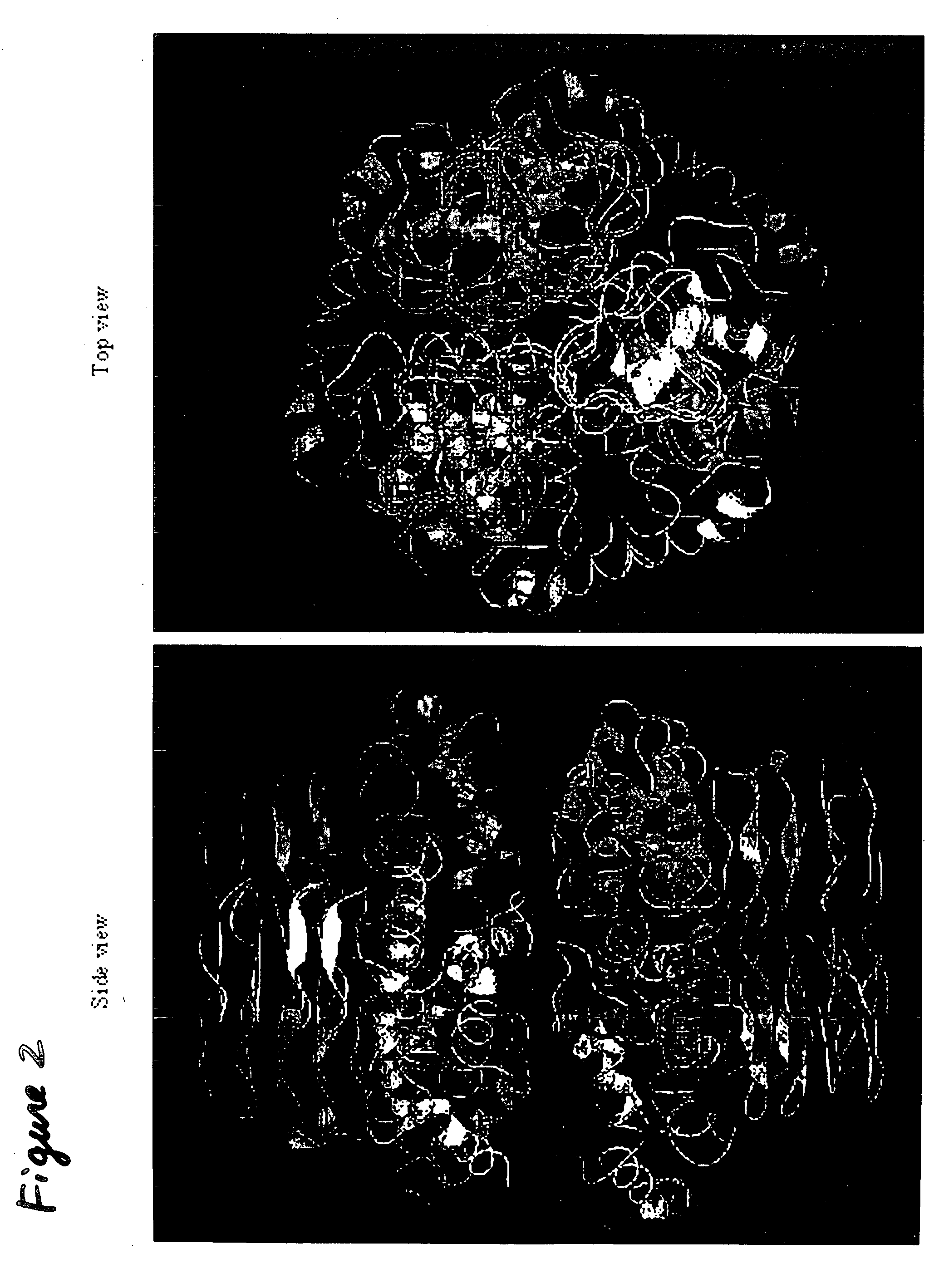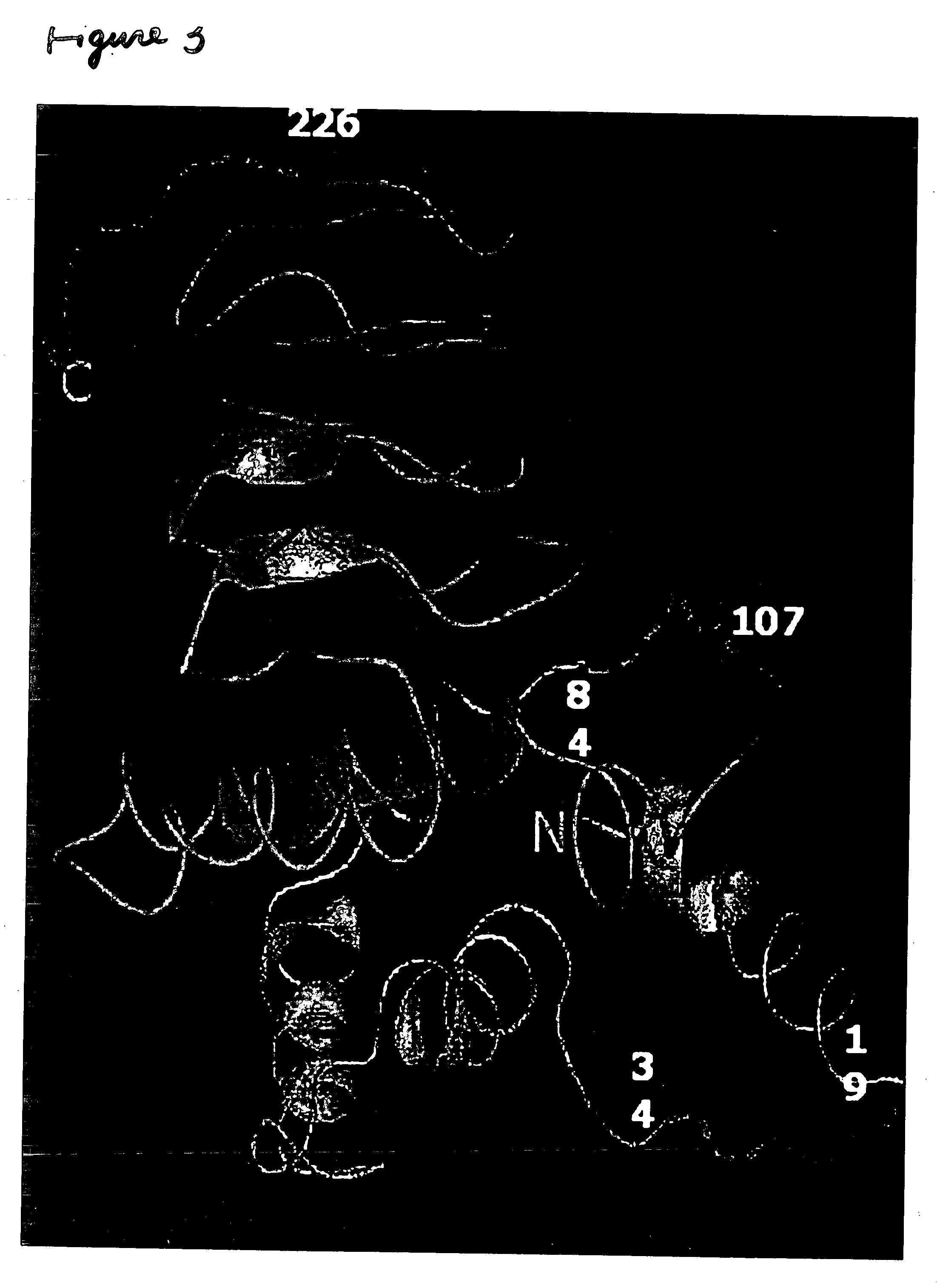Mutant serine acetyltransferase
a serine acetyltransferase and serine acetyltransferase technology, applied in the field of microorganism industry, can solve the problems of decreased activity of mutant enzymes in comparison with wild-type enzymes
- Summary
- Abstract
- Description
- Claims
- Application Information
AI Technical Summary
Problems solved by technology
Method used
Image
Examples
example 1
Three-Dimensional Structure of SAT
[0065] Determination of three-dimensional structure of SAT was made as follows.
[0066] Production and Purification of Selenomethionyl SAT
[0067] To produce the recombinant SAT in Escherichia coli, an expression plasmid for the cysE gene encoding SAT was constructed using vector pQE*. This vector was generated by modifying the E. coli expression vector pQE30 (Qiagen).
[0068] PCR was conducted using pQE30 as a template, and with oligonucleotide primers SEQ ID NO: 17 and 18. The primers were constructed based of the nucleotide sequence of vector pQE30 (www.qiagen.com). Primer SEQ ID NO:18 contains a SphI recognition site and the mismatches depicted in FIG. 1. A unique amplified band of 150 bp was digested with restriction enzymes XhoI and SphI to recover an 80bp fragment of 80 bp. This fragment was ligated to the large fragment of pQE30 which had been previously digested with the same restriction enzymes. The resultant plasmid pQE* contains the SphI c...
example 2
Obtaining Mutant SATs having Region, Containing Residues 89-96, Randomized
[0083] The Randomized Fragment-Directed Mutagenesis
[0084] At first, two plasmids pMW-PompC and PMW-PnlpD were obtained.
[0085] The plasmid pMW-PompC was obtained by cloning a 0.3 kb DNA fragment containing the promoter region of the ompC gene into the PaeI-SalI sites of the plasmid pMW118. The DNA fragment containing the ompC promoter was obtained by PCR using primers P4 (SEQ ID NO: 21) and P6 (SEQ ID NO: 22) and chromosomal DNA from E. coli strain MG1655 as a template. The ompC promoter region is used as a hybridization target for primer 4. An arbitrary sequence can substitute for the ompC promoter so long as primer P4 is designed to hybridize with the sequence.
[0086] The plasmid pMW-PnlpD was obtained by cloning a 0.3 kb DNA fragment containing the promoter region of the nlpD gene into the PaeI-SalI sites of the plasmid pMW118. The DNA fragment containing the nlpD promoter was obtained by PCR using primer...
example 3
Effect of Amino Acid Substitutions on Catalytic Property of SAT
[0099] Catalytic properties of mutant SATs were determined by the method described by Kredich, N. M. and Tomkins, G. M. (J. Biol. Chem., 1966, 241, 21, 4955-4965), which has been slightly modified. Acetyl coenzyme A and other chemicals used were from Sigma Chemical Co. (St. Louis, Mo., USA).
[0100] To determine the activity of mutant SAT, E. coli cells LE392 cysE::KmR carrying recombinant plasmids were grown in 5 ml of M9 medium up to the late exponential phase, washed with 0.14 M NaCl solution, and resuspended in 2 ml of buffer (pH 7.5, 50 mM potassium phosphate and 100 mM KCl). The cells were sonicated and the pellet was separated by centrifugation at 13000 rpm. The SAT-containing protein fractions in the resulting supernatant were precipitated by 5 volumes of saturated (NH4)2SO4 and pellets were dissolved in 2 ml of buffer (pH 7.5, 50 mM potassium phosphate and 100 mM KCl). The obtained solution was added to 0.1 ml o...
PUM
| Property | Measurement | Unit |
|---|---|---|
| temperature | aaaaa | aaaaa |
| temperature | aaaaa | aaaaa |
| distance | aaaaa | aaaaa |
Abstract
Description
Claims
Application Information
 Login to View More
Login to View More - R&D
- Intellectual Property
- Life Sciences
- Materials
- Tech Scout
- Unparalleled Data Quality
- Higher Quality Content
- 60% Fewer Hallucinations
Browse by: Latest US Patents, China's latest patents, Technical Efficacy Thesaurus, Application Domain, Technology Topic, Popular Technical Reports.
© 2025 PatSnap. All rights reserved.Legal|Privacy policy|Modern Slavery Act Transparency Statement|Sitemap|About US| Contact US: help@patsnap.com



